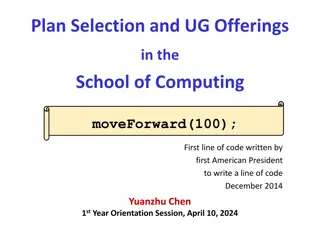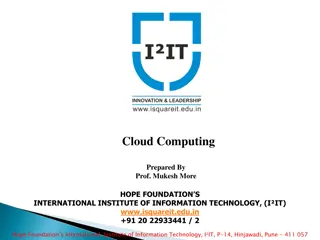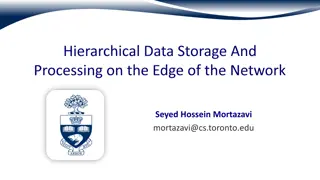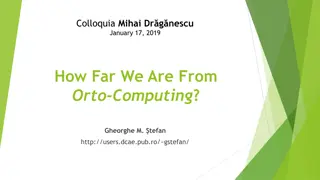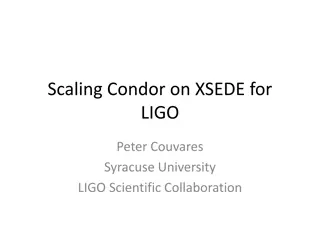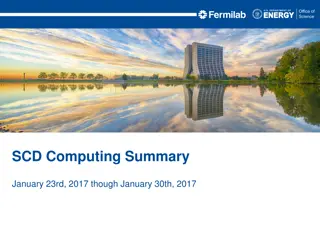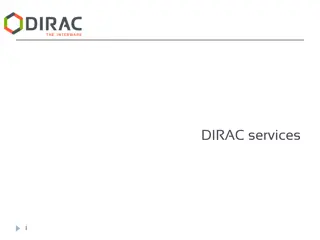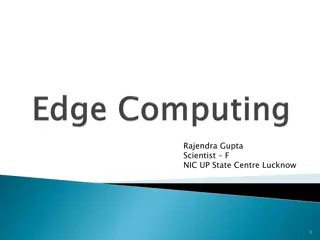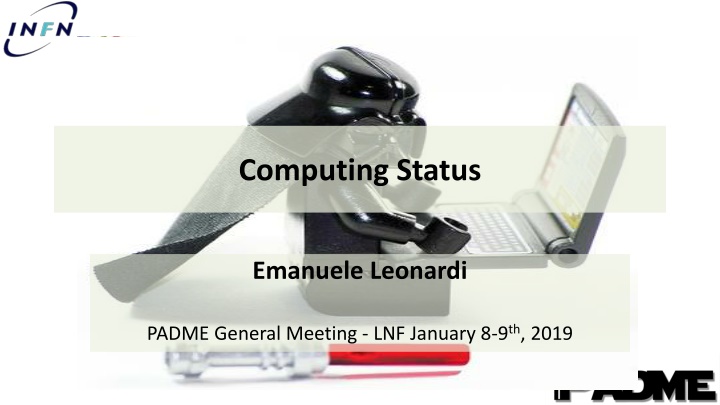
Computing Status Updates and Data Management Overview
Stay updated on the latest computing status at the Emanuele Leonardi PADME General Meeting held at LNF on January 8-9, 2019. Learn about the DAQ system performance, CDR data copying processes, data storage challenges, and data availability protocols. Access raw data, monitor disk space usage, and ensure data retrieval via GRID protocols for seamless operations.
Download Presentation

Please find below an Image/Link to download the presentation.
The content on the website is provided AS IS for your information and personal use only. It may not be sold, licensed, or shared on other websites without obtaining consent from the author. If you encounter any issues during the download, it is possible that the publisher has removed the file from their server.
You are allowed to download the files provided on this website for personal or commercial use, subject to the condition that they are used lawfully. All files are the property of their respective owners.
The content on the website is provided AS IS for your information and personal use only. It may not be sold, licensed, or shared on other websites without obtaining consent from the author.
E N D
Presentation Transcript
Computing Status Emanuele Leonardi PADME General Meeting - LNF January 8-9th, 2019
DAQ Status DAQ working reasonably well 2 days downtime related to trigger board replacement (see report of Dec 11th) 1 night of downtime due to an unplugged clock cable Inefficiency due to run restart procedure and board resets O(few %) Tests to assess effect of BGO thermocouple readout on ADC boards stability are on-going New version of trigger firmware provides additional functionalities Prescaling of individual triggers Software triggers (delayed and random) Autopass events for individual triggers SIn control for synchronized start of run TimePix control PadmeTrig module with green functionalities ready for installation 2 9/1/2019 E. Leonardi - GM 2018-01-09 - Computing Status
CDR Status Data are copied from on-line disk servers (l1padme3, l1padme4) to the LNF disk system and from here to tapes at CNAF and KLOE Independent processes handle data streams in parallel Total throughput >100 MB/s Can keep up with current very high (70 MB/s) DAQ rate No backlog: CDR is currently idle and waiting for 2019 data Procedure to setup/start CDR is described in the PADME wiki https://github.com/PADME-Experiment/padme-fw/wiki The PADME CDR system Disk clean up of on-line disk servers is still manual 3 9/1/2019 E. Leonardi - GM 2018-01-09 - Computing Status
Data Storage Collected ~130 TB of rawdata MUCH more than expected (>5x) due to physical noise in BTF All data available on LNF Tier2 disks, CNAF tapes and KLOE tapes Problem: we only own 80 TB of disk space at LNF Tier2. Asked INFN for more disk space (100 TB) but it will take a long time before we get it For the moment Tier2 management is turning a blind eye on this More tapes at CNAF and KLOE requested to INFN 4 9/1/2019 E. Leonardi - GM 2018-01-09 - Computing Status
Data Availability All data are available only via GRID protocols Need correctly configured certificate with PADME VO access Procedures described in PADME wiki at https://github.com/PADME-Experiment/padme-fw/wiki PADME and the Grid Files can be accessed using the ROOT protocol: root://atlasse.lnf.infn.it:1094//vo.padme.org/daq/2018/rawdata/ run_0000000_20181219_194140/run_0000000_20181219_194140_lvl1_00_000.root Or they can be copied to a local area using the GFAL protocol: gfal-copy srm://atlasse.lnf.infn.it:8446/srm/managerv2?SFN=/dpm/lnf.infn.it/ home/vo.padme.org/daq/2018/rawdata/run_0000000_20181219_194140/ run_0000000_20181219_194140_lvl1_00_000.root file:///home/leonardi/ run_0000000_20181219_194140_lvl1_00_000.root 5 9/1/2019 E. Leonardi - GM 2018-01-09 - Computing Status
PadmeRecoProd An automatic system to systematically run PadmeReco on all rawdata PadmeReco must be installed under CVMFS This still needs some complex manual activities One PadmeRecoProd process per run > PadmeRecoProd r run_0000000_20181219_194140 All files of the run are distributed to many independent jobs 100 files per job (option to change it) Respect time order at file level but not at event level Jobs are submitted to the GRID By default to the LNF Tier2. There is an option to run at CNAF. Jobs access the rawdata files at LNF using the rootx protocol No need to pre-stage or copy the files before starting the job Each job produces a single root file which is stored on the LNF disk system 6 9/1/2019 E. Leonardi - GM 2018-01-09 - Computing Status
Conclusions As Venelin puts it: if we have data, then DAQ is OK All data are copied to LNF Tier2, CNAF and KLOE Data storage is coping with current throughput and will be expanded in 2019 All rawdata are available via GRID protocols (rootx, gfal) Systematic PadmeReco production can be started as soon as we have a stable version of the code 7 9/1/2019 E. Leonardi - GM 2018-01-09 - Computing Status

